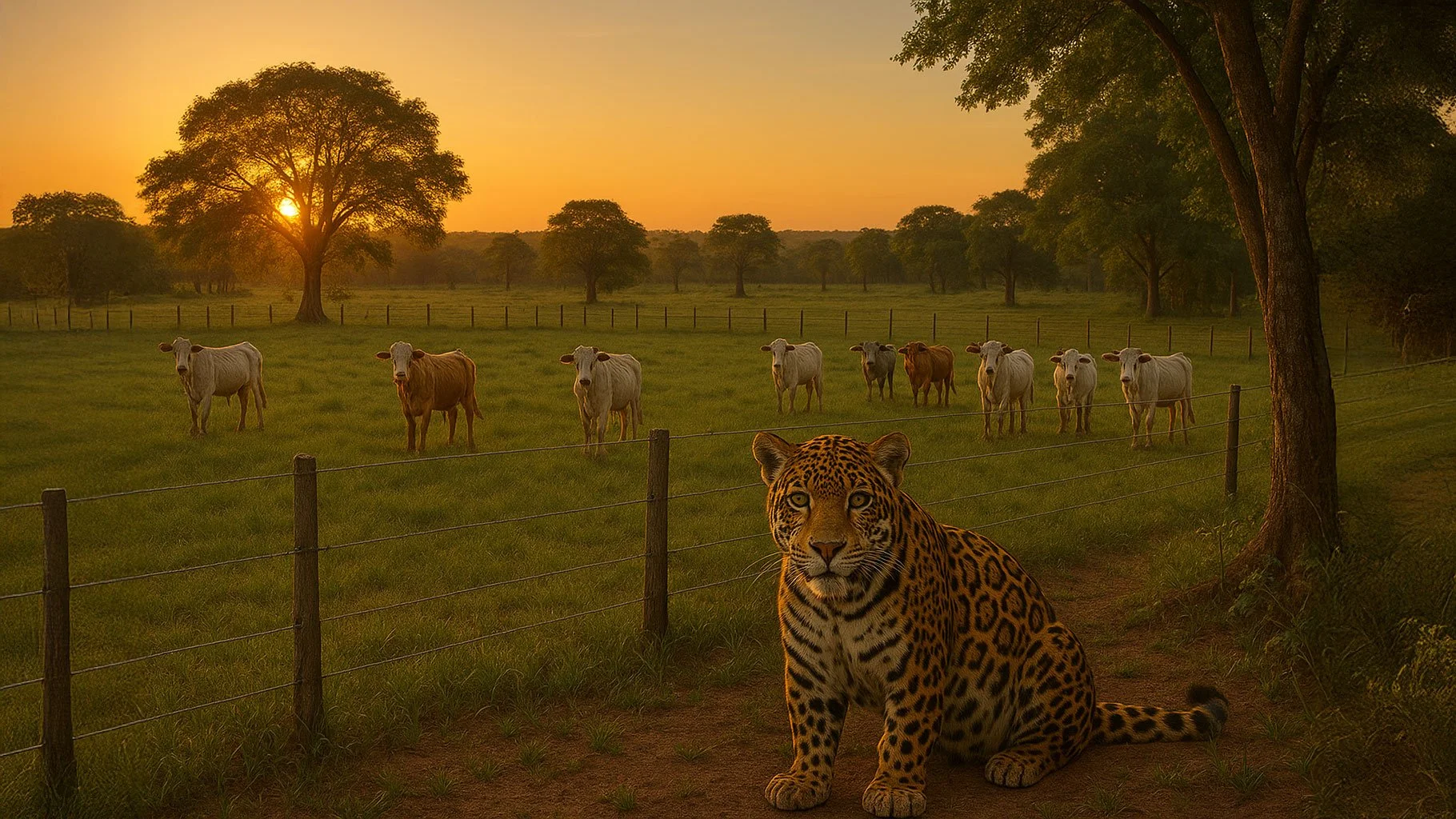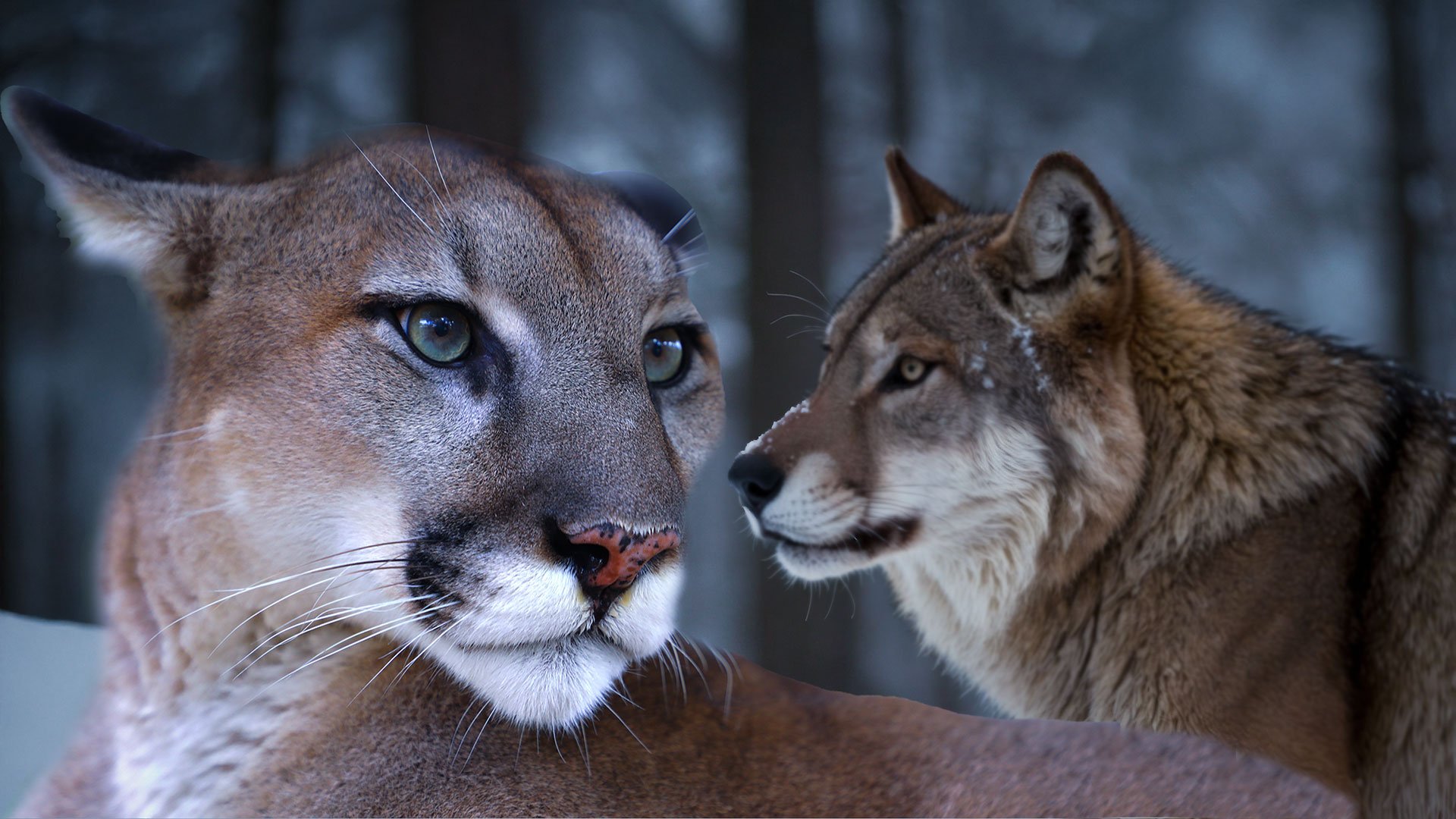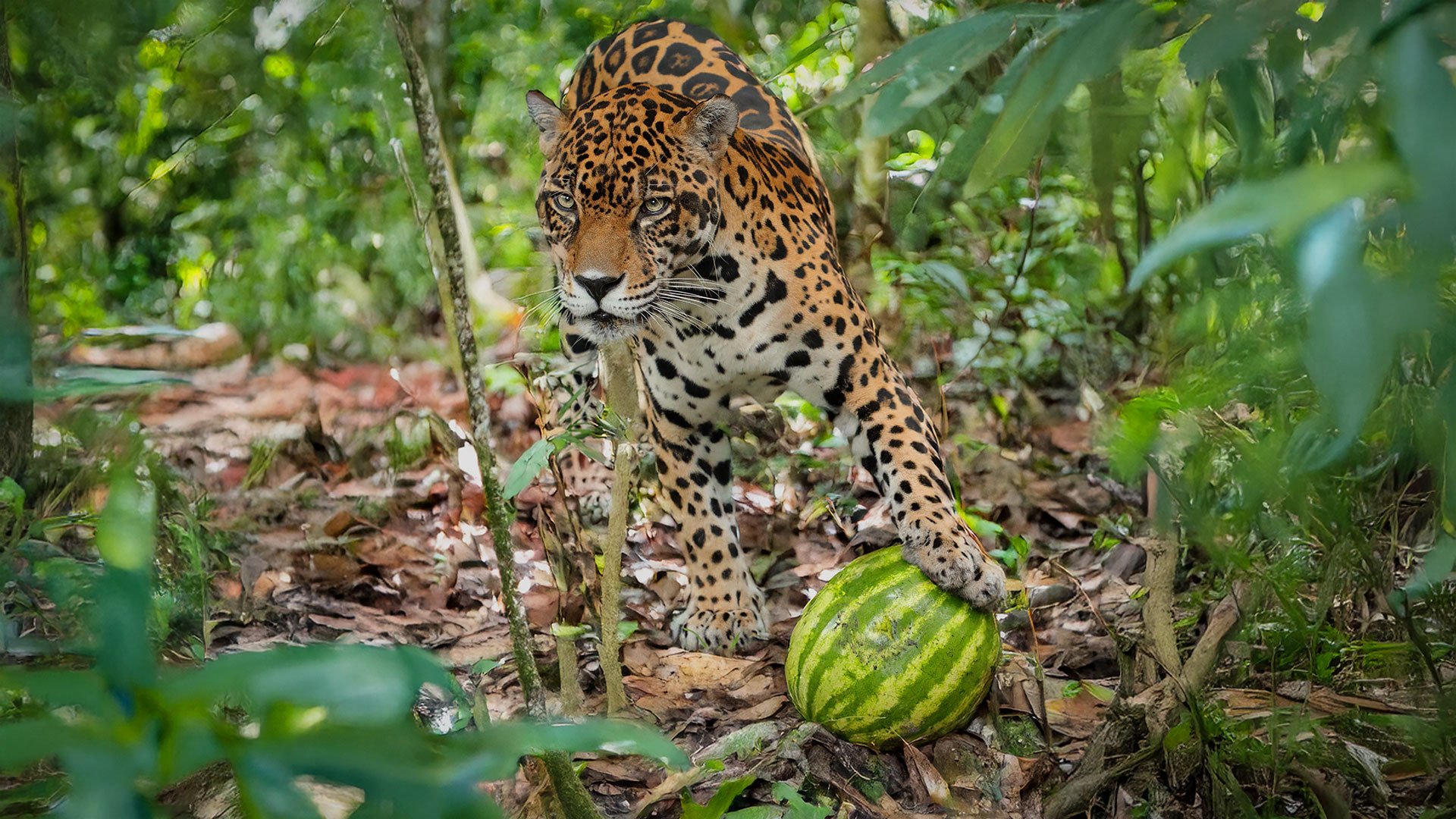Jaguar Facts
Manny Jaguar at Big Cat Rescue
Jaguar: Panthera onca
Common Name: Jaguar
Kingdom: Animalia
Phylum: Chordata (Vertebrata)
Class: Mammalia
Order: Carnivora
Family: Felidae
Genus: Pantherinae Panthera
Species: onca
Misc: The Jaguar and the Leopard are often confused with one another in zoos. Their coloring and markings are so similar that it is difficult for people to distinguish them. The difference lies in the center of the Jaguars rosettes, because unlike the leopard, the Jaguar has spots inside of its rosettes! The Jag is also a much stockier animal than its cousin, with shorter legs and tail – giving it more of a pit bull type appearance.
The name Jaguar comes from the ancient Indian name "yaguar" which meant "the killer which overcomes its prey in a single bound."
Size and Appearance: Jags are the largest felines in the Americas. Adult males can reach an overall length of more than 7 feet, and can weigh anywhere from 150 to 200 pounds. As mentioned above, its coat color and markings are very similar to the leopard, with a rich tawny or yellow background with large black rosettes and spots. It has a larger head, more compact body, and much more powerful paws! The Jaguar also occurs with an all black (melanistic) coat, and like the leopard, the spots can still be seen on black individuals. Albino individuals have been reported as well.
Habitat: The Jaguar is commonly found in rain forests, savannahs, and swamps, but at the northern end of its territory it may enter scrub country and even deserts. The Jaguar still has a stronghold in the Amazon basin, but has been nearly wiped out of all drier regions. Wherever it is found, it requires fresh water as the Jaguar is an excellent swimmer. To see Jaguars in the wild, or help them there, check out www.guato.org
Distribution: Once found here in the United States (California, New Mexico, Arizona, Texas, Florida), this cat was hunted to extinction here in the late 1940s. Today, it is found in Mexico, but swiftly declining and Central America, and the strongest populations being found in the Mato Grosso, Brazil; The Pantanal, bordering Brazil, Bolivia and Paraguay; Chiapas State, Mexico; and the Yucatan Peninsula/northern Guatemala/Belize.
Reproduction and Offspring: Jaguars have no defined breeding season and will mate any time of year. After a gestation period of about 100 days, the female will give birth to a litter of 2-4 cubs. Mothers will continue to feed and protect her young until they are about 1 year old, and they will continue to stay with her until they are about 2 years old. They will reach sexual maturity between 2-3 years for females, and 3-4 for males.
In captivity, jags lived over 20 years, as compared to 11 - 12 in the wild.
Social System and Communication: The Jaguar is solitary and terrestrial, although it is an adept tree climber. It marks its territory with urine and tree scrapes, in the same fashion as the other great cats. It has a variety of vocalizations, including, roars, grunts, and meows.
Hunting and Diet: Jaguars will pursue almost any kind of animal prey within its range, with its favorite being the peccary (a type of wild pig) and the capybara (the worlds largest rodent). Other food items are caiman, tapirs, and fish. Jaguars differ from all the other cats in their method of killing. Once they’ve caught their prey they pierce the skulls with their canines, demonstrating the amazing strength of their powerful jaws. They were once presumed to be nocturnal, but recent studies have shown that they are active during the daytime, with high peaks of activity during dawn and dusk. Jaguars are also more energetic than their larger cousins, and are active for 50-60% of a 24 hour period.
Threats: Deforestation rates are high in Latin America and fragmentation of forest habitat isolates jaguar populations so that they are more vulnerable to the predations of man. People compete with jaguars for prey, and jaguars are frequently shot on sight, despite protective legislation. Jaguars are also known to kill cattle, and are killed by ranchers as pest species. The vulnerability of the jaguar to persecution is demonstrated by its disappearance by the mid-1900's from the south-western US and northern Mexico. Commercial hunting and trapping of jaguars for their pelts has declined drastically since the mid-1970's, when anti-fur campaigns and CITES controls progressively shut down international markets.
Status: CITES: Appendix I. IUCN: Near Threatened. The jaguar is fully protected at the national level across most of its range, with hunting prohibited in Argentina, Brazil, Colombia, French Guiana, Honduras, Nicaragua, Panama, Paraguay, Suriname, United States, Uruguay and Venezuela, and hunting restrictions in place in Brazil, Costa Rica, Guatemala, Mexico and Peru. The species also occurs within protected areas in some of its range.
How rare is this cat? Felid TAG recommendation: Jaguar (Pantherinae Panthera onca). Although perhaps the longest-lived large felid species, the recently approved SSP found the North American population in AZA zoos and most other locations to be aging and virtually untraceable. As this time, only 22 of the 95 U.S. jaguars can be traced back to nature. This population is being managed as an education population because of its relative abundance in many parts of its range. Additional founders are expected to be periodically available for inclusion into the SSP. The target population is 120 individuals.
What is Big Cat Rescue doing for the Jaguar? We participated in an AZA sanctioned study by being the only facility to provide tracking information via detailed photos and casts of paw prints from our captive South American Pumas so that they could be discerned from jaguar tracks in Costa Rica. This will help researchers determine local populations and their habits so that land can be protected for their future.
National Geographic aired a wonderful documentary by Dr. Alan Rabinowitz called, In Search of the Jaguar.
See Conservation Work Funded By Big Cat Rescue here:
All conservation insitu work: https://bigcatrescue.org/insitu/
Big Cat Rescue Helps Protect Jaguars in Belize
Belize Jaguar Project: In January 2015 an enclosure for two displaced wild jaguars, Lady Hill and Mistletoe, in Belize was sponsored in honor of all of the Big Cat Rescue volunteers, interns, and staff. Since then the team at the Belize Zoo has been working through the rainy season to build the enclosure.
The main structure is now complete and includes night houses, swimming pools, and lots of natural habitat for these two jaguars to enjoy. The last step is to roof the enclosure, which they are currently working on. Here are a few photos of the progress.
These two jaguars were nuisance cats who came into very close proximity to where people reside. In order to spare their lives they were trapped and taken to the Belize Zoo which is a sanctuary for native wildlife that can not be released back into the wild. Had these two jaguars not been removed, they would have been terminated by the government.
December 23, 2017
FAQ Friday: How to Tell the difference Between a Jaguar and a Leopard
Many people have a hard time distinguishing the difference between a jaguar and a leopard. Let us clear that up for you! BigCatTV.com



































